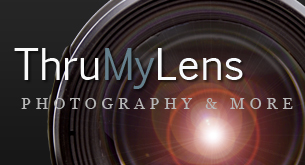For the next three day I waited and thought a lot about my roll of film. I was reasonably sure the first eight or so photos were going to be blurry – it took me about that long to get the hang of the focusing system. And the metering experience left me feeling like few if any of the photos would be exposed correctly. “Maybe I’ll get back three…maybe five usable photos.” During the afternoon of the 3rd day I got a surprise…my photos were emailed to me in a link where I could download a ZIP file (A couple of days later, I got a text to come pick up the negatives). Expanded, the images were between 1.5mb and 2mb each. I was sweating pretty hard when I opened that first image file…it was a photo of my Rottweiler Athena taken on our deck. It looked great! Note that I’ve done no editing of these photos (other than a little straightening in some instances):
My first impression of the image was that the colors, focus, and exposure were pretty darn good. Maybe just a tad dark. I opened the next image which was a shot taken in portrait orientation so I could get her full body:
I eventually opened all 37 images on my roll of 36 (I had to get SOMETHING extra for what I shelled out) and much to my equal parts shock and delight, all the photos were reasonably well exposed. Only one photo was a bit blurry – a shot that I took inside one of the little shops in downtown Miamisburg. I’ve learned my lesson and will stick to 400 ISO film and use tripods indoors. Amazingly, this indoor shot I took of my wife and brother-in-law at Thanksgiving came out reasonably well:
Here’s another head shot I took of my brother-in-law sitting at our table next to a window for light:
I brought my camera with me on Black Friday and took a couple of pics while my wife was shopping:
Most of the rest of my film roll I burned in downtown Miamisburg:
Part of the reason why I decided to explore film photography was to see if I was competent enough in my craft and the exposure triangle to take good pictures on a vintage film camera. I was genuinely surprised at how well the photos turned out.
Several of the images are under exposed a by about as much as a full stop. I’m guessing I need to be a bit more intentional when using my light meter app. I need to remember that it will meter for the exact spot at which I am pointing and not necessarily the entire scene. If this camera had an exposure compensation dial, then I would probably keep it at a quarter to half stop of added exposure. I’m sure I could greatly improve the scans with some exposure adjustments in Lightroom, but again I’m showing these “straight out of the camera” scans as I received them.
Most of the images exhibit quite a bit of grain. Perhaps it’s a bit of an acquired taste, but I can’t say that I find it as charming or appealing as many advocates of film photography seem to.
I can’t say that I’m ready to abandon digital and go all in on film based on this first experience. But given that the results were quite honestly better than expected, I’m eager to give it another try and see if I can improve. I’ve already placed an order for a Canon A-1 as I believe some of the features of that camera will be extremely helpful such as the previously mentioned exposure compensation dial. Right now, I see the difference between digital and film photography much like the difference between an automatic and a manual transmission. Automotive purists will install the virtues of a manual transmission. I’m definitely a car guy, but I’ve just never seen the appeal of a manual transmission. I’ve owned cars with a manual transmission and it’s an interesting novelty, but not something I like to live with day to day. And I sort of feel the same way about film photography at this point.
Part III Of this article may have to wait until the spring of next year, but I want take the A-1 out and compare it to images produced by my FujiFilm X100VI and my Canon R5 Mark II. This won’t be a comparison to find out who is better or worse. Rather, the intention will be to see the differences and how each camera system handles, light, shadows, and color. And I think it will be interesting to Compare the genuine film, taken images to those with the FujiFilm film simulation applied. It might even be interesting to compare some Fujifilm film stock like Acrros for example to the film simulation To see how close they actually are. Stay tuned.
















0 Comments